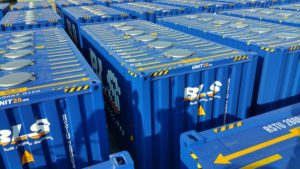Containerization of cargo is becoming increasingly widespread throughout the world and almost all products are transported in containers. Cargo in containers is still exposed to climatic, biological and chemical influences. If transportation must take place without loss, choosing the right type of container is fundamental. The information on containers is described below. |
Standard container

A standard container, also known as a general purpose container. Such containers are closed, because have protection from all sides. Containers vary in weight and size, resulting in a wide range of containers. As standard, use 20 and 40 Foot containers, although now there is a tendency to increase in size, for example, "45" feet.
Open container

The walls of open containers are usually made of corrugated steel, and the floor is made of steel. Such a container has the following distinctive structural features: the roof may consist of a removable awning, the door can be turned out. These two design features greatly simplify the process of packing and unpacking the container: it is easy to pack and unpack the container from above or through the doors using a crane or crab when the roof is open and the container door header is turned outwards. It should be noted that the purpose of the bow of the roof with an open top is not exceptional support for the tent, but a contribution to the strength of the container. The usual open containers are “20” and “40” feet.
Reefer container

The reefer container consists of a floor structure with a bearing capacity consisting of a steel frame, a softwood floor and two end walls, which can be fixed or collapsible. The end walls are strong enough that allows you to attach loads and means for fastening several containers to each other. Sizes 20 and 40 feet. The attachment rings can take loads of up to 2000 thousand kilograms for 20 feet and 4000, respectively. For the transport of certain goods, such containers can be used with props.
Platform (Plats)

Platforms consist solely of an extremely high load bearing floor design: they have no side or end walls. Such a high load capacity allows you to concentrate heavy loads in small areas. The platform consists of a steel frame and wooden floor. 20 and 40 foot sizes available.
Ventilated container

Ventilation is provided by a hole in the upper and lower side rails. Holes prevent splashes in order to prevent wear and spoilage of the cargo by rain. There are 20 foot containers.
Bulk container

Bulk containers (bulk) have three loading hatches with a diameter of 455mm. (1 ¾). The distance between the hatches is 1.83 m. Alternatively, two ramps can be installed in doorways to empty the container. Such containers can be used to transport general cargo. Some bulk containers are equipped with loader pockets that allow the container to be moved using forklifts.
Tank container

Tank-containers - Tanks that are intended for the transport of food should be labeled "drinkable liquid." A tank container is usually designed for operating pressures up to 3 bar (above atmospheric). If the cargo requires controlled temperature transportation, the tanks can be equipped with insulating materials for heating.
Tanks should not be filled more than 95%, it is necessary to leave 5% for thermal expansion of the contents.





